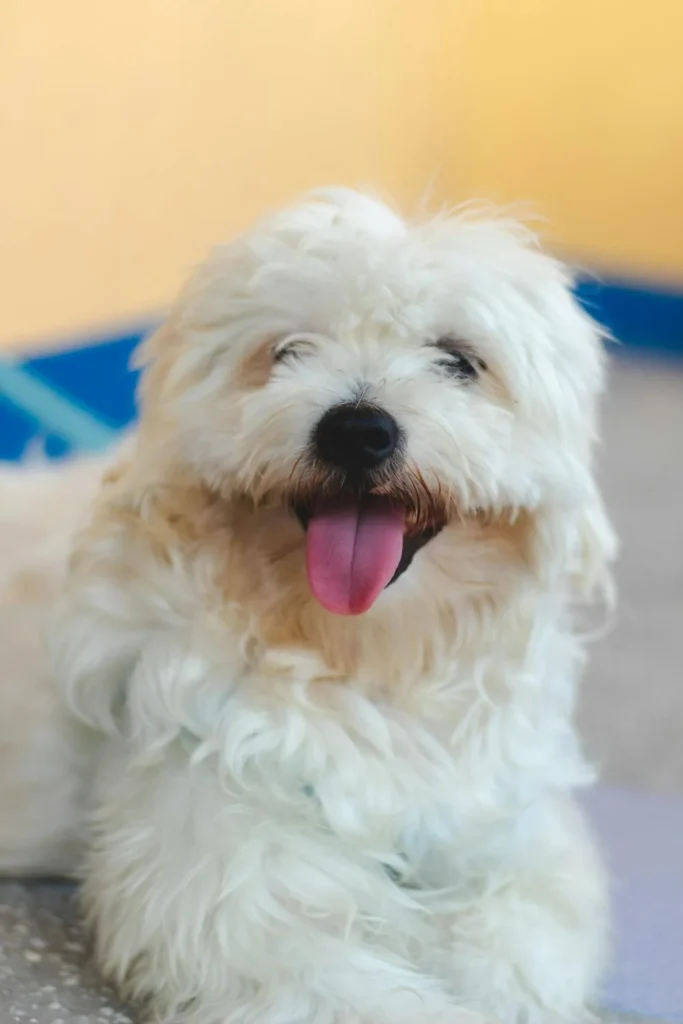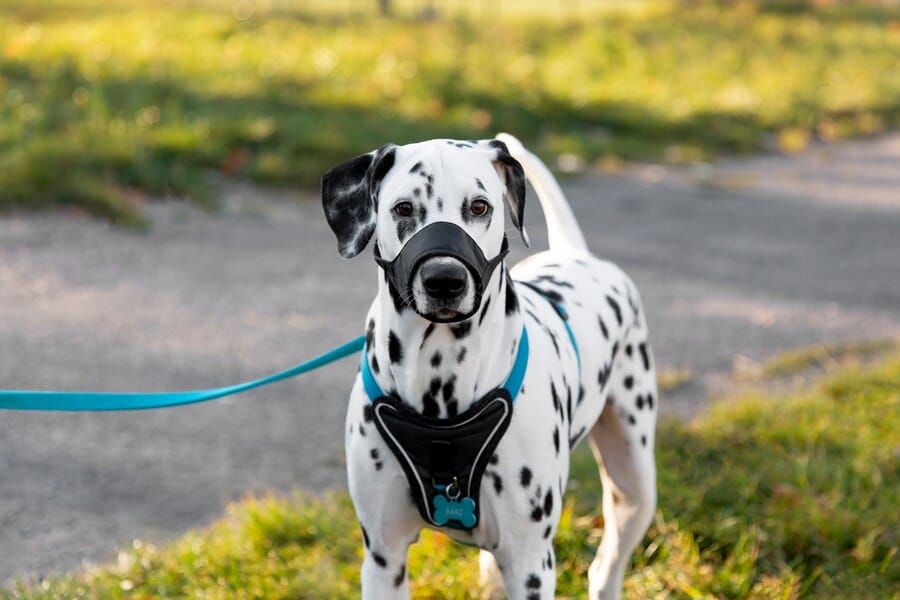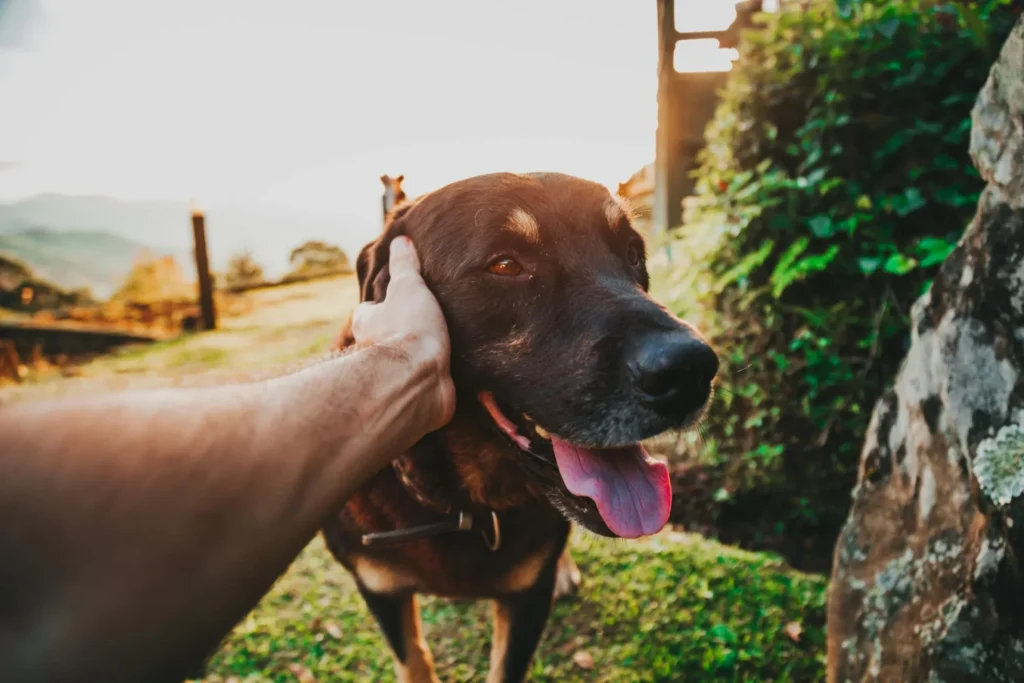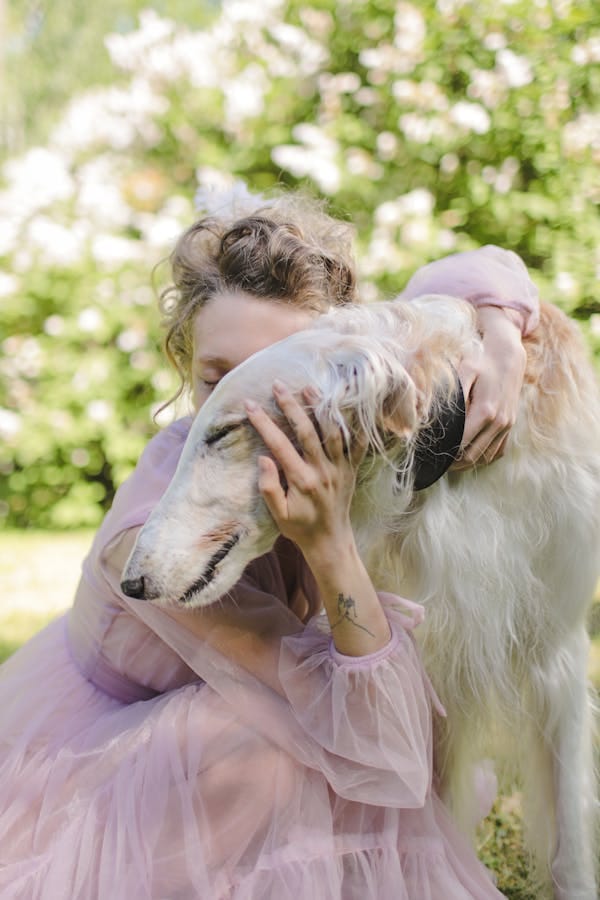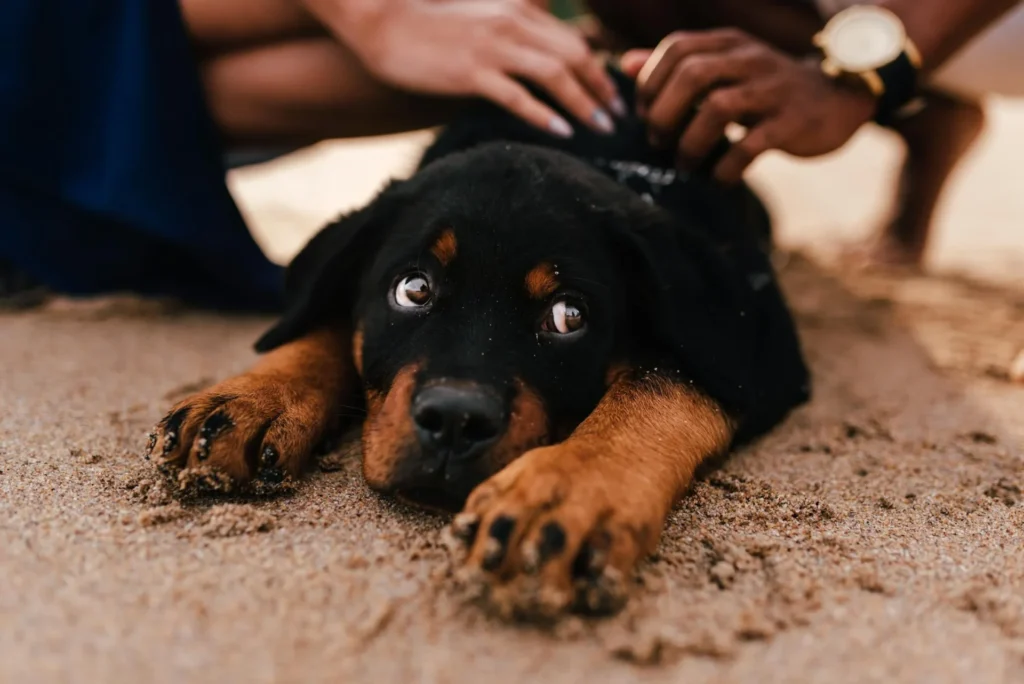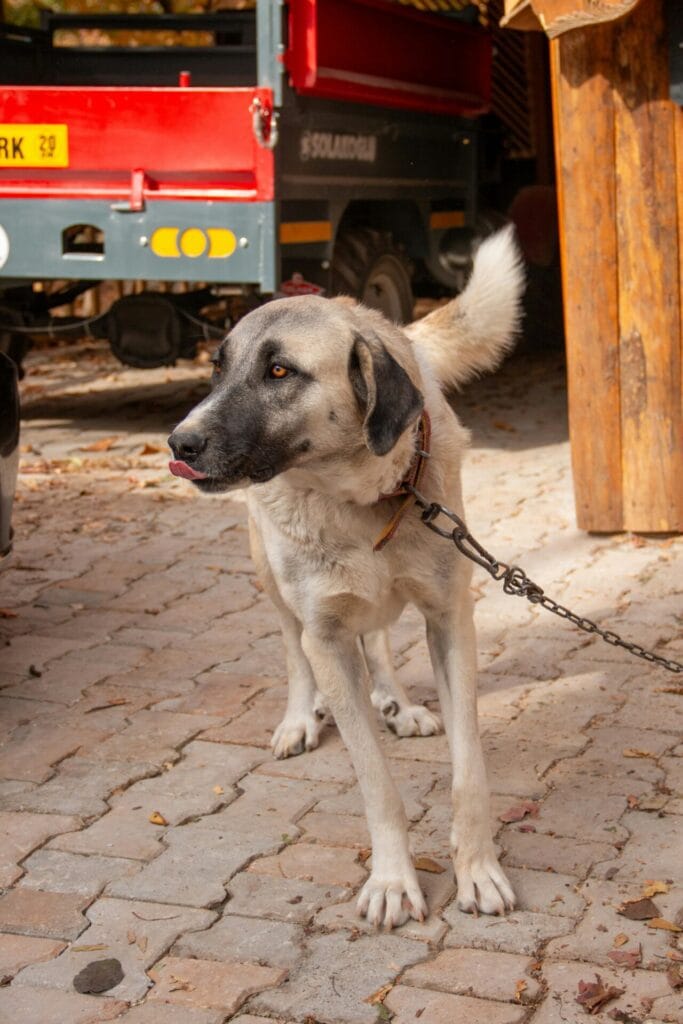- Introduction to Saint Bernard🐾
- History and Heritage 📚
- Physical Characteristics and Breed Standards 📏
- Temperament and Personality 💝
- Training and Socialization 🎓
- Health Considerations and Care 🏥
- Exercise and Activity Requirements 🏃♂️
- Grooming Needs 🧹
- Living with a Saint Bernard 🏠
- Nutrition and Feeding Guidelines 🍖
- Cost of Ownership 💰
- Common Health Issues and Solutions 🏥
- Finding a Reputable Breeder 🔍
- Saint Bernard Puppies 🐶
- Frequently Asked Questions (FAQs) ❓
- Expert Tips and Conclusions 💡
Written by Dr. Sarah Miller, DVM, Certified Canine Specialist, in collaboration with Robert Chen, Professional Dog Trainer with 15 years of Saint Bernard breeding experience
Introduction to Saint Bernard🐾
When you think of a gentle giant with a heart of gold, the Saint Bernard instantly comes to mind. These magnificent dogs, known for their massive size and loving nature, have captured hearts worldwide. Standing proudly at up to 30 inches tall and weighing up to 180 pounds, Saint Bernards aren’t just big dogs – they’re extraordinary companions with a rich history and unique personality traits.
Understanding Basic Saint Bernard Facts
| Characteristic | Details |
|---|---|
| Height (Males) | 28-30 inches |
| Height (Females) | 26-28 inches |
| Weight (Males) | 140-180 pounds |
| Weight (Females) | 120-140 pounds |
| Life Expectancy | 8-10 years |
| Coat Types | Short-haired and Long-haired |
| Primary Colors | White with red, brown, or brindle markings |
History and Heritage 📚
The Legendary Origins
The Saint Bernard’s story begins in the Swiss Alps, where these remarkable dogs were bred by monks at the Saint Bernard Hospice, founded by Bernard of Menthon in the 11th century. These dogs weren’t just pets – they were lifesavers, literally. For three centuries, they helped rescue thousands of travelers lost in the treacherous Alpine passes.
Notable Historical Facts:
- The most famous Saint Bernard, Barry (1800-1814), saved 40 lives
- They were originally called “Barry Dogs” or “Hospice Dogs”
- The breed was officially recognized by the American Kennel Club in 1885
Evolution of the Breed
| Time Period | Major Developments |
|---|---|
| 1000s | Founding of Saint Bernard Hospice |
| 1600s | First recorded use as rescue dogs |
| 1800s | Breed standardization begins |
| 1900s | Transition to family companions |
| Present | Popular family pets worldwide |
Physical Characteristics and Breed Standards 📏
The Saint Bernard Build
These dogs are impressive physical specimens, built for strength and endurance. Their most distinctive features include:
- Massive, well-proportioned head
- Short muzzle with black nose
- Deep-set, dark eyes with gentle expression
- Muscular neck and shoulders
- Broad chest and strong legs
- Distinctive tail carried low
Coat Variations 🎨
Saint Bernards come in two coat varieties:
- Short-haired (Smooth)
- Dense, smooth coat
- Easier maintenance
- Better suited for warmer climates
- Long-haired (Rough)
- Medium-length coat
- Feathering on legs and tail
- Requires more grooming
- Better cold weather protection
Temperament and Personality 💝
Understanding a Saint Bernard’s temperament is crucial for potential owners. These gentle giants are known for their calm and patient nature, making them excellent family companions. Let’s explore their key personality traits:
Core Personality Traits
- Patient and gentle
- Incredibly loyal to family
- Good with children
- Protective without aggression
- Social and friendly
- Intelligent but sometimes stubborn
Social Behavior Chart
| Interaction Type | Compatibility Level | Notes |
|---|---|---|
| With Children | ⭐⭐⭐⭐⭐ | Gentle and patient, but supervision needed due to size |
| With Other Dogs | ⭐⭐⭐⭐ | Generally friendly, early socialization important |
| With Cats | ⭐⭐⭐ | Can coexist well if introduced early |
| With Strangers | ⭐⭐⭐⭐ | Typically friendly but naturally protective |
| Alone Time | ⭐⭐ | Prefer company, can develop separation anxiety |
Training and Socialization 🎓
Early training and socialization are essential for Saint Bernards due to their size and strength. A well-trained Saint Bernard is a joy to have, while an untrained one can be challenging to manage.
Training Timeline
8-12 weeks:
- Basic command introduction
- House training
- Leash training basics
- Socialization with people and pets
3-6 months:
- Strengthening basic commands
- Introduction to advanced commands
- Continued socialization
- Establishing routines
6-12 months:
- Refining obedience
- Advanced training
- Public behavior training
- Strengthening social skills
Training Tips for Success 📝
- Start Early
- Begin training as soon as you bring your puppy home
- Establish clear boundaries from day one
- Create consistent routines
- Use Positive Reinforcement
- Reward good behavior with treats and praise
- Never use harsh corrections
- Be patient and consistent
- Focus on Crucial Commands
- “Sit” and “Stay” are essential due to their size
- “Leave it” helps prevent unwanted chewing
- “Come” is vital for safety
- “Gentle” teaches them to be careful with their strength
Common Training Challenges
| Challenge | Solution |
|---|---|
| Pulling on Leash | Start leash training early, use proper equipment, reward good walking behavior |
| Jumping Up | Teach “off” command, ignore jumping, reward four-on-floor behavior |
| Stubbornness | Use high-value treats, keep sessions short, maintain patience |
| Mouthing | Redirect to toys, teach “gentle” command, provide appropriate chew items |
Health Considerations and Care 🏥
Saint Bernards require specific health attention due to their size and breed characteristics. Understanding and preparing for these needs is crucial for any owner.
Major Health Concerns
- Hip Dysplasia
- Genetic condition affecting hip joints
- Symptoms include difficulty rising and decreased activity
- Treatment options: medication, weight management, surgery
- Prevention: proper exercise, maintaining healthy weight
- Bloat (Gastric Dilatation-Volvulus)
- Life-threatening emergency
- Risk factors: large meals, eating too quickly, exercise after meals
- Prevention: multiple small meals, slow-feed bowls, rest after eating
- Heart Conditions
- Regular cardiac check-ups needed
- Watch for coughing, lethargy, exercise intolerance
- Treatment varies based on specific condition
Exercise and Activity Requirements 🏃♂️
Despite their large size, Saint Bernards need moderate exercise to maintain good health. Understanding their exercise needs at different life stages is crucial for their well-being.
Exercise Guidelines by Age
| Age | Daily Exercise Needs | Type of Exercise | Notes |
|---|---|---|---|
| 3-6 months | 15-20 minutes × 2 | Gentle play, short walks | Avoid high impact |
| 6-12 months | 20-30 minutes × 2 | Walks, supervised play | Monitor joint stress |
| 1-5 years | 30-45 minutes × 2 | Walks, swimming, play | Avoid extreme heat |
| 5+ years | 20-30 minutes × 2 | Gentle walks, light play | Follow dog’s pace |
Activity Do’s and Don’ts 📋
Do’s:
- Regular but moderate exercise
- Swimming (excellent low-impact activity)
- Interactive play sessions
- Mental stimulation games
- Early morning or evening walks
Don’ts:
- Exercise in hot weather
- Intense activity before/after meals
- Forced running or jogging
- Excessive jumping
- Long hikes before maturity
Grooming Needs 🧹
Saint Bernards are heavy shedders requiring regular grooming to maintain their coat and overall hygiene.
Grooming Schedule
| Task | Frequency | Tools Needed |
|---|---|---|
| Brushing | 2-3 times weekly | Slicker brush, undercoat rake |
| Bathing | Every 6-8 weeks | Dog shampoo, towels, dryer |
| Nail trimming | Every 4-6 weeks | Nail clippers, styptic powder |
| Ear cleaning | Weekly | Ear cleaner, cotton balls |
| Teeth brushing | 2-3 times weekly | Dog toothbrush and paste |
Seasonal Shedding Management 🗓️
Spring:
- Daily brushing during heavy shedding
- More frequent baths
- Use of deshedding tools
Summer:
- Regular brushing to remove loose fur
- Keep coat clean and mat-free
- Monitor for skin issues
Fall:
- Prepare for winter coat growth
- Deep cleaning sessions
- Check for any coat problems
Winter:
- Maintain regular brushing
- Pay attention to paw care
- Keep coat dry after snow exposure
Living with a Saint Bernard 🏠
Space Requirements
Saint Bernards can adapt to various living situations, but certain considerations are essential:
| Living Space | Suitability | Considerations |
|---|---|---|
| Large House | Excellent | Ideal space, yard access |
| Medium House | Good | Needs organization |
| Small House | Possible | Requires planning |
| Apartment | Challenging | Need nearby outdoor access |
Climate Considerations 🌡️
These dogs were bred for cold weather and need special care in different climates:
Cold Weather:
- Natural comfort zone
- Monitor for ice buildup between paws
- Regular coat maintenance
- Indoor/outdoor flexibility
Hot Weather:
- Air conditioning essential
- Limited outdoor activity
- Access to fresh water
- Morning/evening exercise only
- Never leave in hot cars
Daily Life Management
- Indoor Living:
- Non-slip flooring
- Sturdy furniture
- Easy access to water
- Designated rest areas
- Pet gates if needed
- Outdoor Living:
- Secure fencing (minimum 6 feet)
- Shaded areas
- Fresh water supply
- Monitored time outside
- Safe play areas
Nutrition and Feeding Guidelines 🍖
Proper nutrition is crucial for Saint Bernards, as their large size requires specific dietary considerations. Let’s break down their nutritional needs and feeding schedules.
Daily Caloric Needs
| Life Stage | Weight | Daily Calories | Meals Per Day |
|---|---|---|---|
| Puppy (2-4 months) | 20-40 lbs | 1,400-2,000 | 4 |
| Puppy (4-8 months) | 40-80 lbs | 2,000-3,000 | 3-4 |
| Adult (Female) | 120-140 lbs | 2,500-3,000 | 2-3 |
| Adult (Male) | 140-180 lbs | 3,000-3,800 | 2-3 |
| Senior | Varies | 2,000-2,800 | 2 |
Essential Nutrients 🥩
Proteins:
- High-quality meat sources
- 23-25% for puppies
- 18-22% for adults
- Sources: chicken, lamb, fish, beef
Fats:
- 12-15% for puppies
- 8-12% for adults
- Essential for coat health
- Source of energy
Carbohydrates:
- Moderate amounts
- Complex carbs preferred
- Sweet potatoes, brown rice
- Avoid fillers
Feeding Schedule Tips 📅
- Puppy Feeding:
- Small, frequent meals
- Measured portions
- Consistent timing
- High-quality puppy food
- Adult Feeding:
- Fixed meal times
- Elevated food bowls
- Slow-feed bowls recommended
- Fresh water always available
Cost of Ownership 💰
Understanding the financial commitment of owning a Saint Bernard is essential for potential owners.
Initial Costs
| Item | Cost Range |
|---|---|
| Puppy from reputable breeder | $1,500-$3,000 |
| Initial vet visits/vaccinations | $300-$500 |
| Spaying/neutering | $200-$500 |
| Basic supplies | $500-$800 |
| Training classes | $200-$500 |
Annual Costs
| Expense Category | Estimated Annual Cost |
|---|---|
| Food | $800-$1,200 |
| Routine vet care | $400-$600 |
| Grooming | $600-$900 |
| Insurance | $600-$1,000 |
| Toys/supplies | $200-$400 |
| Emergency fund | $500-$1,000 |
Hidden Costs to Consider:
- Large dog medications cost more
- Vehicle modifications may be needed
- Home modifications (gates, beds)
- Higher deposits for rentals
- Professional cleaning services
Common Health Issues and Solutions 🏥
Saint Bernards are prone to certain health conditions. Understanding these can help in prevention and early detection.
Major Health Concerns Table
| Condition | Symptoms | Prevention | Treatment Options |
|---|---|---|---|
| Hip Dysplasia | Limping, difficulty rising | Weight management, proper exercise | Surgery, medication |
| Bloat | Distended abdomen, restlessness | Multiple small meals, no exercise after eating | Emergency surgery |
| Heart Problems | Coughing, fatigue | Regular checkups | Medication, lifestyle changes |
| Eye Problems | Redness, discharge | Regular cleaning | Medication, surgery |
| Bone Cancer | Lameness, swelling | Regular checkups | Surgery, chemotherapy |
Finding a Reputable Breeder 🔍
Choosing the right breeder is crucial for getting a healthy Saint Bernard puppy and supporting ethical breeding practices.
Breeder Evaluation Checklist
| Criteria | Good Signs | Red Flags |
|---|---|---|
| Health Testing | Complete health screenings, OFA certification | No health records available |
| Environment | Clean, spacious facilities | Overcrowded, unsanitary conditions |
| Transparency | Open about health issues, allows visits | Reluctant to show facilities |
| Documentation | Provides pedigree, health certificates | Missing or incomplete paperwork |
| Knowledge | Extensive breed knowledge, ongoing support | Limited information, pushes quick sales |
| Price | $1,500-$3,000 range | Significantly lower/higher prices |
Questions to Ask Breeders 📝
- Health Screening:
- Hip and elbow certifications
- Cardiac evaluations
- Eye examinations
- Genetic testing results
- Breeding Program:
- Breeding frequency
- Number of litters
- Parent selection criteria
- Socialization practices
Saint Bernard Puppies 🐶
Growth Chart
| Age | Male Weight | Female Weight | Key Development Stages |
|---|---|---|---|
| 8 weeks | 15-25 lbs | 12-22 lbs | Weaning complete |
| 3 months | 35-45 lbs | 30-40 lbs | Basic training begins |
| 6 months | 75-95 lbs | 65-85 lbs | Rapid growth phase |
| 9 months | 110-130 lbs | 90-110 lbs | Sexual maturity |
| 12 months | 130-150 lbs | 110-130 lbs | Physical maturity starts |
| 24 months | 140-180 lbs | 120-140 lbs | Full maturity |
Puppy Care Essentials 🍼
- First Days Home:
- Puppy-proofed space
- Consistent routine
- Gentle introduction
- Plenty of rest
- Essential Supplies:
- Large crate
- Quality puppy food
- Appropriate toys
- Training pads
- Sturdy leash and collar
Socialization Timeline 📅
8-12 weeks:
- Different people
- Various sounds
- Other vaccinated pets
- Different surfaces
12-16 weeks:
- New environments
- Basic commands
- Car rides
- Grooming introduction
Frequently Asked Questions (FAQs) ❓
General Questions
Q: How long do Saint Bernards live?
A: Typically 8-10 years, though some may live longer with excellent care.
Q: Are Saint Bernards good with children?
A: Yes, they’re typically excellent with children but need supervision due to their size.
Q: How much do they shed?
A: They’re heavy shedders, especially during seasonal changes, requiring regular grooming.
Health Questions
Q: Are Saint Bernards prone to hip problems?
A: Yes, hip dysplasia is common in the breed, making health screening crucial.
Q: How can I prevent bloat?
A: Use elevated bowls, feed multiple small meals, and avoid exercise around mealtimes.
Care Questions
Q: How much exercise do they need?
A: Moderate exercise – typically 30-60 minutes daily, split into two sessions.
Q: Can they live in apartments?
A: While possible, it’s challenging due to their size and exercise needs.
Expert Tips and Conclusions 💡
Success Tips from Experts
- Early Training:
- Start socialization early
- Establish routines
- Use positive reinforcement
- Be consistent
- Health Management:
- Regular vet checks
- Weight monitoring
- Joint care
- Preventive medicine
- Lifestyle Considerations:
- Space requirements
- Time commitment
- Financial planning
- Family involvement




